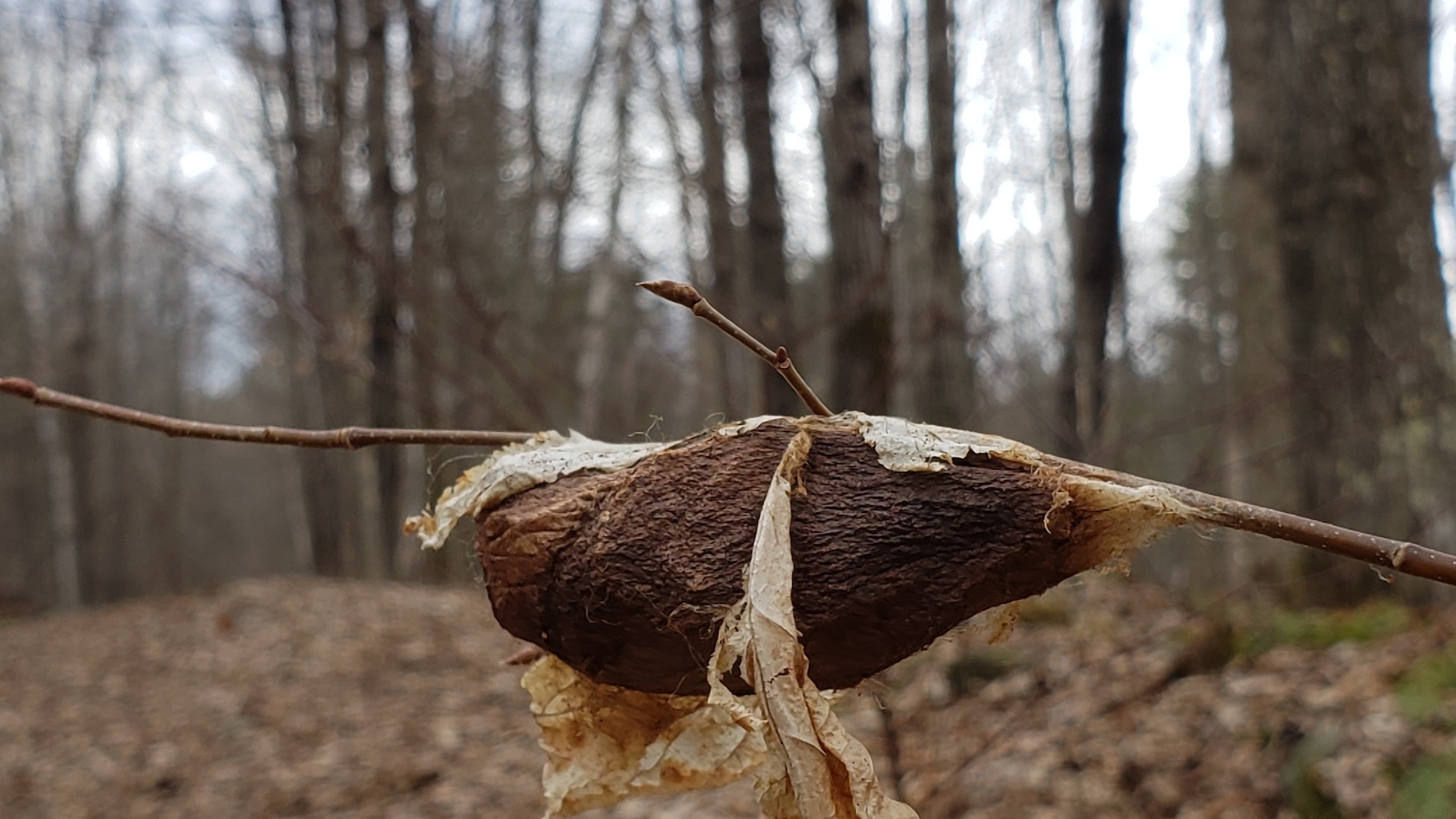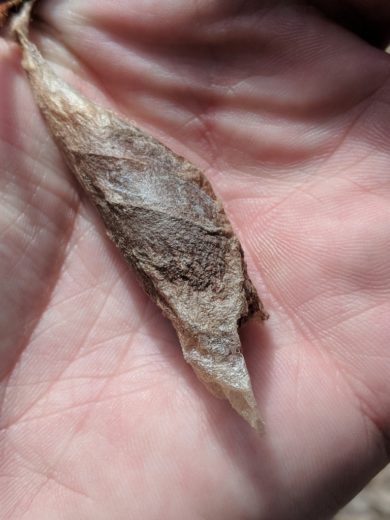Giant Silk Moths have declined over the past several decades across the Northeast from the introduction of parasitic flies, light pollution, and land use and climate change. Stick season in Vermont provides us an opportunity to see cocoons of some of these amazing moths hanging in bushes and trees. Join us during November as we search for these amazing insects overwintering in cocoons.
Cocoon Watch calls on community naturalists across the state to find and document silk moth cocoons by photographing them and uploading your observations to The Giant Silk Moth Coccoon Watch 2022 project on iNaturalist. If you can, return to the location of the cocoon in spring and document if the moth (or a parasite) emerges.
Participation is simple! Find Giant Silk Moth cocoons attached to branches of trees or bushes, photograph them, and upload your observations to our iNaturalist project. Learn more on our Join page.
Read about our results from last year’s efforts.
Vermont has five known species of giant silk moths: Cecropia Silkmoth (Hyalophora cecropia), Promethea Silkmoth (Callosamia promethea), Polyphemus Silkmoth (Antheraea polyphemus), Luna Moth. Another species only recently found in Vermont is the Columbia Silkmoth (Hyalophora columbia).
The truth is that like many of the moths of Vermont, we know little about the locations and extent of Giant Silk Moth populations. Populations in the Northeast have perhaps been in decline for decades. One possible explanation is dispersal of the “natural” insecticide Bacillus thuringiensis (Bt) against LD moths (Lymantria dispar). It most likely harms native insects as well. A study at the University of Massachusetts-Amherst seems to have found another culprit. Researchers there discovered that an introduced parasitic fly, Compsilura concinnata, attacks and kills giant silk moth caterpillars. The fly was repeatedly introduced from 1906 to 1986 to control some 13 pest species. Concerns about the effect on native moths by this fly were expressed as early as 1919.








